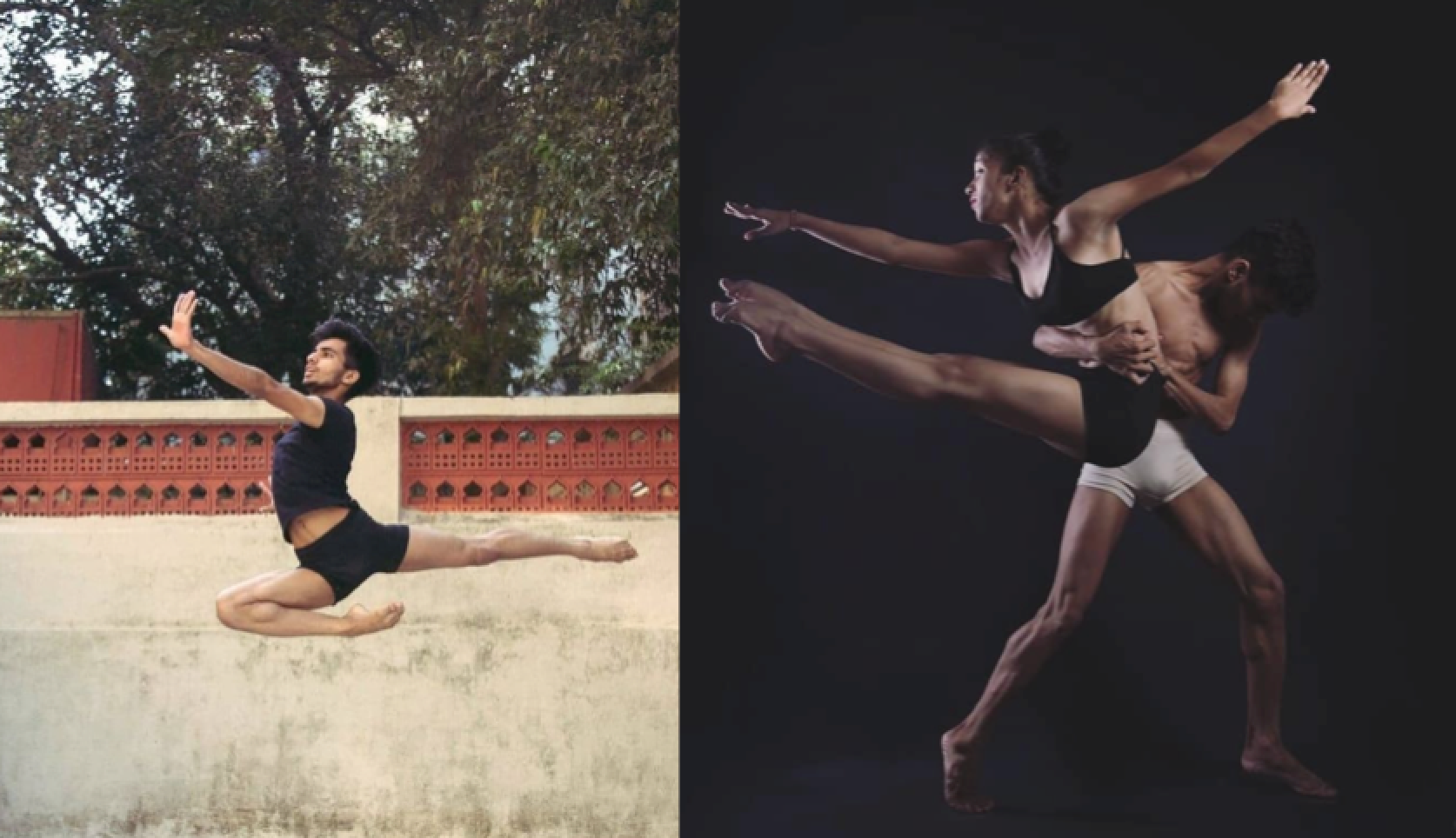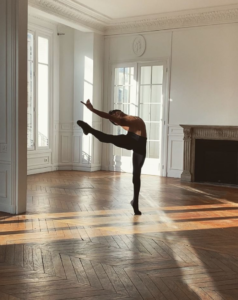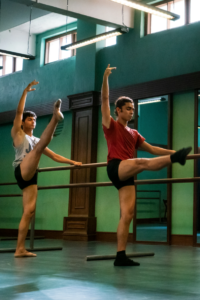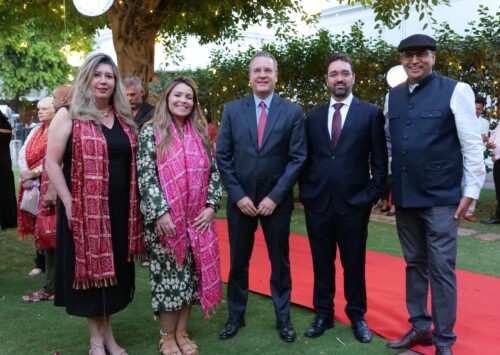Ballet leaps into mainstream Indian dance scene

Ballet is opening up doors for talented Indian dancers (Photo: courtesy of Dipesh Verma; left: Sonia Gandhi, right: @sayandeeppatro)
Growing up in the small town of Siliguri at the foothills of the Himalayas in West Bengal, 20-year-old Dipesh Verma always knew he was born to dance. However, Verma’s father, a grocer, was adamant against letting his son pursue the art form, forcing him to practice secretly at 3 am in his room or bunk tuitions to go find any empty space around town where he could just let go and perform, if only for himself.
Unable to enrol in classes in his hometown where dance was simply not accepted, Verma picked up steps from dancers he found online, such as teen prodigy Sophia Lucia and Nick Daniels. It was then that he discovered ballet for the first time.
“From a young age, dance always gave me excitement and pure joy. But my relatives pressured my parents, saying it was low-class and “shameful” for their son to dance, that I would ruin my future. I started with other styles like Bollywood and contemporary, but when I saw a video of Sophia Lucia doing ballet, I found it extremely beautiful and it triggered something in me. It brought me into a different world and opened my eyes, and I realised this is something I want to do, even though at the time I had never even seen male dancers or guys in ballet,” Verma tells Media India Group.
Fed up of having his dreams crushed by judgemental relatives, Verma made the tough decision to leave home at only 16 and move to Mumbai, where he was able to apply and enrol in the notable Danceworx Academy’s “Going Home” programme, a fully-funded dance scholarship which helps talented young dancers from financially challenged backgrounds across India, and trained under renowned Israeli ballet instructor, Yehuda Maor.

Verma practiced ballet for multiple hours everyday to catch up on years of missed training (Photo: Dipesh Verma)
But this was not an easy ride. Ballet varies from other forms of dance like hip-hop as it involves rigorous training from a very early age. Having started at 17, Varma had to work twice as hard to learn the proper techniques. What propelled him to success was his single-minded focus on the dance, despite every possible roadblock thrown in his way.
“In western countries, dancers start training at 3-6 years old and start working professionally at 18 to 20 years old. I didn’t have any contact with my family for almost 2 years, and since I was a minor, I could not even find a job, so I slept at train stations many times. But even when I had no money, I was super happy because I was dancing all day,” Verma says, laughing.
Although nowhere near the popularity of classical dances like Bharatanatyam and Kathak, the ballet scene in India has been blossoming over the last few years, and Verma’s story is similar to a few other boys who had the courage to pursue an unlikely dream. Most others also came from disadvantaged backgrounds or small towns where ballet, or even modern dance training, was hard to come by, and have been aided by such scholarships. Verma’s fellow student at Danceworx, Bobby Roy, the son of a clothing street vendor, also got a scholarship to the Paris Marais Dance school in 2019 along with Verma. In 2017, Manish Chauhan and Amiruddin Shah, children of a taxi driver and welder respectively, were both part of the “Going Home” project at Danceworx as well, and Shah embarked on his professional training in London at the Royal Ballet School.
In the dance world, and especially gender-codified styles such as ballet, male ballet dancers are often encouraged with scholarships and special training. But this is a double-edged sword for Indian aspirants, and Verma, like many others, initially faced backlash for his unique passion. Despite the fact that many famous Indian choreographers are men, the societal stigma of perceiving men who pursue the arts as feminine, still prevails.
“It was very difficult to explain to people that I dance ballet, especially about the role of male dancers in ballet, since it is not very common. Even back in school, when my friends knew I danced, I was bullied a lot; they called me “girl”, other slurs, so it was a very hard time,” says Verma.
Ballet breaks barriers
Yet, Verma admits he is ecstatic that the perception of ballet in the country is evolving, sometimes helped by big, influential names in the entertainment industry. Another notable young name on the Indian ballet scene is 20-year-old Kamal Singh from Vikaspuri, who attended a summer programme at the renowned Vaganova Academy of Russian Ballet in 2019, where he participated as a principal dancer in the school’s annual productions of famous ballets like The Nutcracker and Swan Lake. Singh was then accepted to the English National Ballet School in London and to help pay the fees, he used the crowdfunding platform Ketto, which was co-founded by Bollywood actor Kunal Kapoor. Inspired by Singh’s story and vision, another actor, Hrithik Roshan also pledged GBP 3,200 to the fund.
Another incredible success story, Manish Chauhan, now a student at New York City’s Peridance, got a big break in 2020 when he played a fictionalised version of himself in the Netflix-produced Hindi film Yeh Ballet, about a dancer who overcomes challenges and pursues his dreams. Displaying the niche art form in mainstream Indian entertainment will undoubtedly help open audiences’ eyes to the beauty of ballet.
“Ballet is unique because it acts like a foundation for many urban, street, other dance styles and even performers who do theatre, musicals, often train in ballet to fix their alignment, body structure, flexibility, strength. You are changing the structure of your body, which is not natural, so it really takes a long time to develop. Although it is very different in terms of musicality and choreography: ballet is very up in the air with leaps and pirouettes, and Indian classical dances are quite grounded, both styles are foundational and take years to perfect, and also emphasise a lot on technique, so if you’re very good at ballet, it becomes easy to pick up other dance styles,” explains Verma.
This blend of dance styles is part of what has inspired ballet’s diversity in the last decade, and instructors, dance companies and prestigious schools in Europe and America now welcome dancers from different parts of the world who can bring their own culture to the art form. For example, Ballet Black, a professional UK-based ballet company for international dancers of Black and Asian descent, was one of the first to start manufacturing bronze and brown pointe shoes instead of the centuries-old traditional pale pink satin, which dancers earlier had to painstakingly “pancake” or colour with foundation to match their skin tones.
Verma explains that a game-changer in ballet would be to include dancers in public funding, similar to Western countries where rather than ballerinas being privately funded, operas and some schools are often supported by the government.
“The ballet scene is definitely growing in India, people are coming from abroad to teach, and there are great schools like Imperial Fernando Ballet Company, Danceworx Academy, ICMD Dance School. Things will take time to change as it is still very new, so of course there will be some rejection. It will be much easier when ballet is supported by the government, because that will bring about a much bigger change and improve the whole vision of ballet,” he says.
One of the main barriers, however, continues to be finance, and Verma regretfully says that although he receives several messages from aspiring ballet dancers, not many can afford the expensive training and tools, or even to move across the country alone.
“I was very desperate to pursue it, so I just left home and it worked out somehow, but I understand it is not easy for everyone. There are definitely more people who want to learn, and the demand is there, but we need more training schools to come up,” says Verma.
Not only schools, but there is often a gap in India of experienced, professional ballet instructors with decades of rigorous classical training under their belt. Verma explains it is important to have a mentor with experience of performing, touring and training all around the world in ballet, rather than a teacher who goes abroad for a couple of years just to experience the basics and returns. One of his dreams, therefore, is to eventually impart this knowledge onto students like him to have the passion to break free and experience the invigorating world of ballet.
“I just graduated from Paris Marais Dance School this year, and now I am auditioning for professional dance companies, like Paris Opera Ballet, and Wayne McGregor in London. I want to tour around the world and meet different people, delve into theatre, and as long as my body can move physically, I want to dance everywhere. And then, my dream to share it in India where it is hard for people to reach such an art form,” says Verma.










